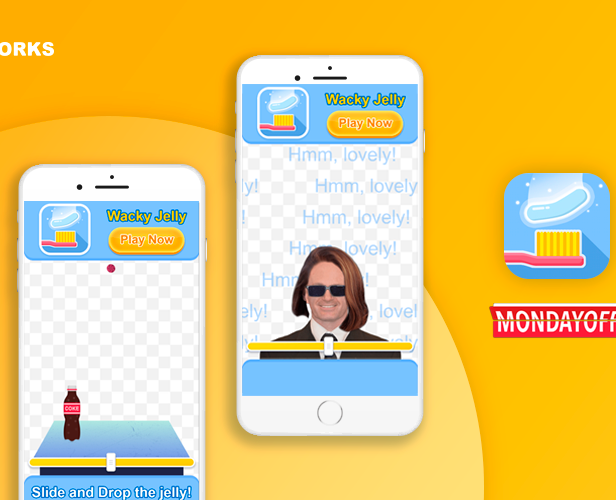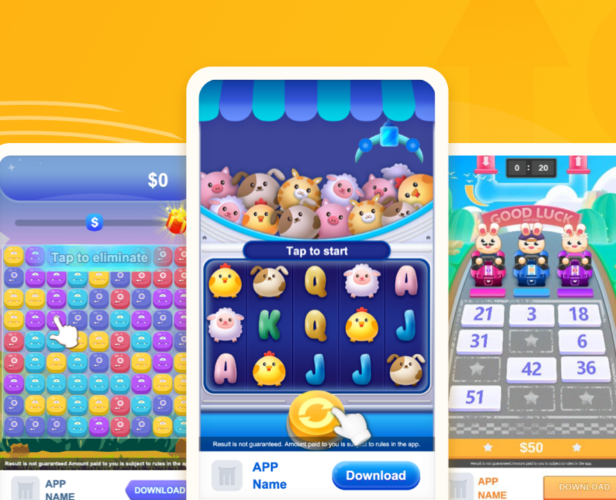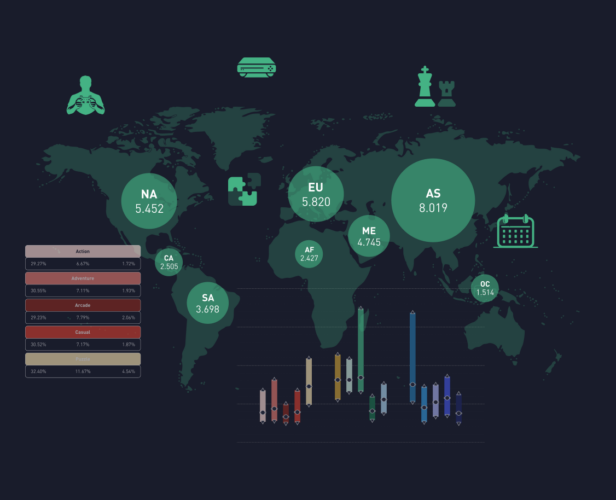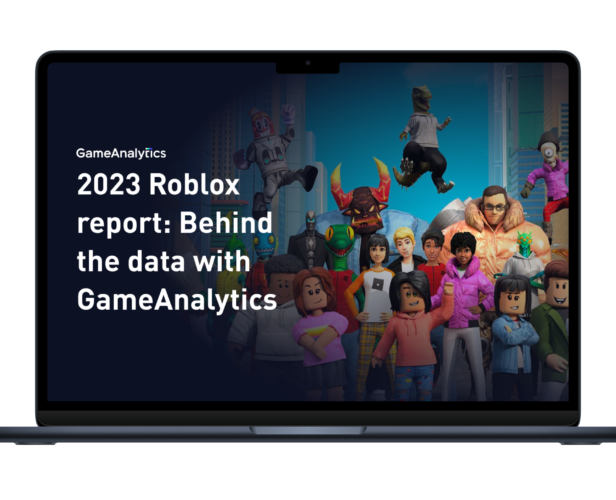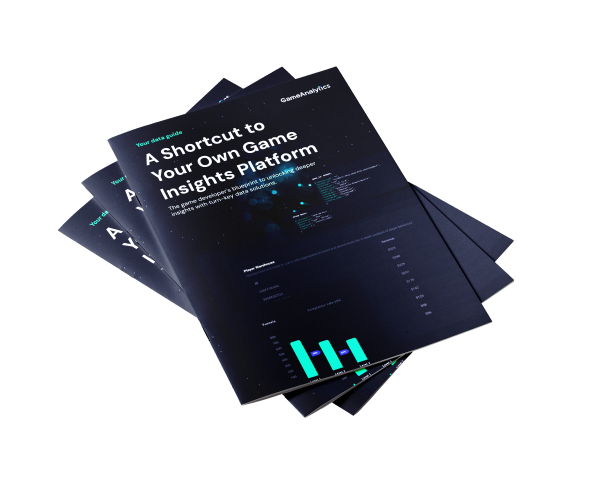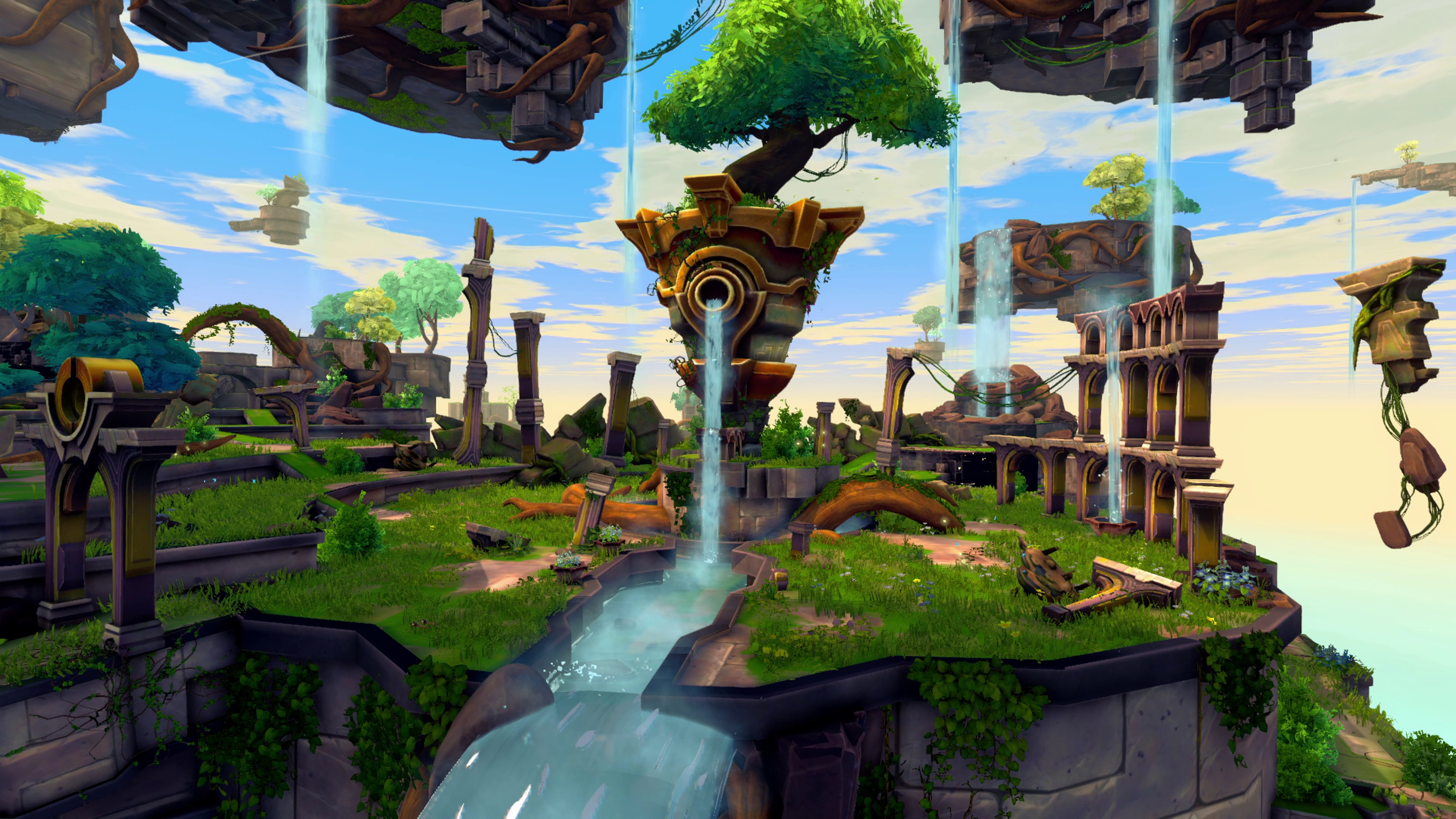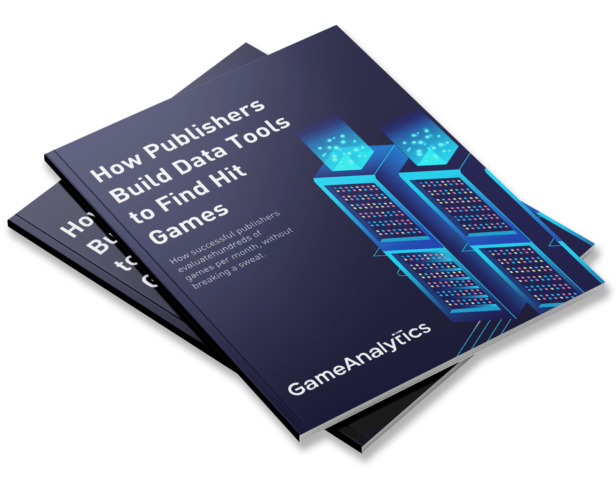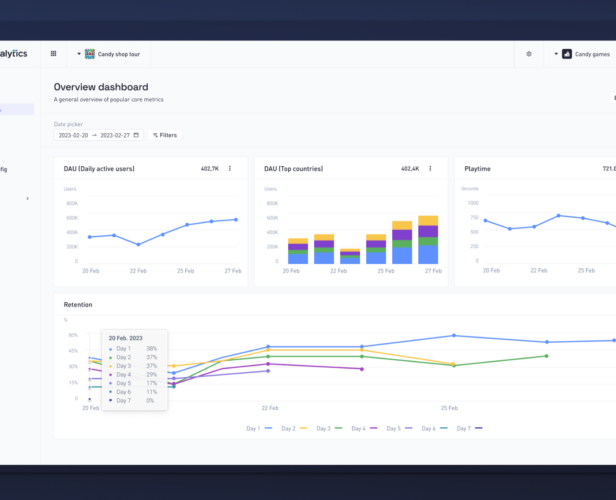Resources > All
Insights and tips about the games industry
Subscribe for gaming insights, industry reports and product updates delivered straight to your inbox.
#Ads & Monetization
How MondayOFF increased IPM by 57% with playable ads
Editors note: This article was originally written and published by Mindworks, a leading self-service creatives platform from Mintegral. You can find their original version here. Mindworks is giving GameAnalytics users exclusive trial access to create countless playables and advertise them for free with Mintegral. Hurry, this amazing offer is for a limited time only. Activate your free Playturbo trial The success of playables in Asia In Japan and South Korea, where banners and video ads dominate, the emerging playable ads have significantly changed people’s perception of ads, thanks to the immersive, highly interactive ad experience they provide. At the same time, these playable ads are also helping the games break out and make a splash on the global market. According to UA data from Mintegral: Playable ads increase IPM by over 85% on average in Japan and Korea, and 40%...
#Game Deconstructions
6 games that successfully layer in meta mechanics
As we’ve mentioned before, the hyper-casual market is being forced to change. With more competition, higher CPIs and tightening margins, developers need to increase their retention if they’re going to continue making money, now more than ever. And to do that, they must layer more mechanics and elements into their games. We’ve explored how and why developers can – and should – shift from hyper-casual to hybrid-casual. But if you’re still struggling to see how that might be possible, let’s look at a few games that have used meta mechanics to make their game more engaging. Here are six games that have a short, simple and satisfying core loop, but have layered in meta features to increase their retention. Let’s dive in. 1. Archero: How to add progression systems well Developed by Habby, released 24th March 2019. This was one...
#Ads & Monetization
Boost your user acquisition with free playables!
Editors note: This article was originally written and published by Mindworks, a leading self-service creatives platform from Mintegral. You can find their original version here. Mindworks is giving GameAnalytics users exclusive trial access to create countless playables and advertise them for free with Mintegral. Hurry, this amazing offer is for a limited time only. Activate your free Playturbo trial What’s the deal with playables? Playable ads have quickly become one of the most popular ad formats among apps and brands due to their premium user experience, accessibility, and superior conversion performance. And while playable ads are effective, they are typically expensive and time-consuming to produce, posing a significant challenge to scalability. It’s for this reason we’ve launched the Playable Ad Editor on the Playturbo platform. The Playable Ad Editor now provides advertisers with a zero-coding, drag-and-drop online editor to easily...
#Game Deconstructions
How Stumble Guys hit 225m downloads
It’s no secret that Stumble Guys is heavily influenced by Fall Guys. When Fall Guys came out in 2020, it had many clones. But none of them stuck. And none of them even touched the amount of success that Stumble Guys achieved over the last few months. So what makes Stumble Guys different? Well, Kitka Games spent a lot of time polishing this title, layering in a range of social and meta-features to keep players engaged. Despite its rocky start (it only had a few thousand players for more than a year after it first launched), it’s now one of the top games on the app stores, with over 225 million downloads and $40 million in revenue. Not surprising then, that it’s claimed the number one spot in the charts for several weeks running. But how was Kitka Games so...
#Game Design
Six features that turn a hyper-casual dud into a hybrid-casual hit
Cracking the hyper-casual market is more challenging than ever. Why? Quite simply, there’s too much competition. This simultaneously drives up the cost of getting new players and makes it easier for players to churn. And that’s particularly problematic because – with higher acquisition costs – studios need higher retention rates if they’re going to make a profit. But a new genre has emerged: Hybrid-casual. Studios have realised that if they’re going to keep retention high, they need to layer in more features and aspects of meta-game. The tact is to keep the core gameplay short, simple and satisfying, but add meta-features that encourage players to keep coming back. Features like progression systems and collectibles that add more depth to the core game. (You can read more about why the shift is happening in our other post on the topic.) In...
#Ads & Monetization
Navigating Web3: What does it mean for Game Developers?
If you read tech news, you’ve probably stumbled on the term Web3. And you might be wondering what it means and how it could affect gaming. So let’s explore Web3 and the surrounding opinions. What is Web3? It’s all about ownership. The web has been going through gradual changes, ever since it launched. Web1 was where people uploaded websites with static pages and information. You simply read Web1. The next step was Web2, where users create their own content. Web3 is a prediction that users will begin to own digital content and have control over how they use it. But it’s also about decentralizing that ownership: making sure it’s not tied to any particular platform. (You don’t just own a movie on one platform, you own the right to watch it anywhere, for example.) “I was lucky enough to be...
#Tool & Product
Access all of your GameAnalytics data with DataSuite
We’re delighted to announce that we’ve now bundled access to all of our DataSuite features under one plan, with just one price. So it’s now simpler (and cheaper!) to access your GameAnalytics data. If you’d like to learn more, just book a consultation or request pricing for your particular needs here. So what does this mean? Well, without breaking the bank, you can now get access to every feature we have in DataSuite for a single monthly cost. You’ll be able to query your raw data, extract it into your own internal tools, easily spot trends and perform advanced analysis across your entire portfolio of games. In this article, we’re going to cover exactly what those features are, why we’ve made this change, and how you can use DataSuite to learn more about your games and your players. Multiple ways...
#VR & AR
Bring VR to your mobile game
Virtual reality has been a hot topic for a few years now. And although there are a few kinks to iron out, VR is starting to take its seat in the gaming industry – it now boasts around 171 million VR users worldwide. We actually support VR games. Our SDKs work out of the box for Oculus Quest games. You just need to download our SDKs as usual, but with one extra step. (But more on that below.) It still comes second place to most other types of gaming in the industry. (Mobile gaming is easily one of the top dogs, having generated $93.2 billion in 2021 alone.) But VR is a space to keep your eye on (or even dip your toes into). But how do you even get started developing VR games? What tools and skills will you...
#Data & Analytics
Top visualizations for game telemetry data
Imagine this. You come into work, load up your dashboard, and you’ve got a map of the world – each country a different colour. The greener the country, the more your game is making there. Visualizing your data can help you understand how your games are performing on an instinctive level. Numbers don’t often ‘click’ in our minds. But visuals – those give us gut feelings. They can help you see your data from a different perspective, and let you spot important insights you would have otherwise glossed over. But what can you do? Let’s dive into the top data visualization techniques and how to use them. 1. Line charts: Think time Line charts show us how values change over time. They’ll let you spot trends, like whether you have a lull in your installs on the weekends. Need to...
#Data & Analytics
How TapNation makes hit games with DataSuite
TapNation helps nurture over 80 studios to develop hit games. Data is crucial when working on any genre. But particularly when you’re making a hypercasual game. TapNation helps studios all over the world to develop and improve their games. But to do that, they need accurate data. Fast. That’s where DataSuite comes in: it’s a collection of our services to help you bring all your data together and easily plug it into your other systems. We spoke with TapNation’s VP of engineering, Kamel Haddad, to see how that works. And what they use DataSuite for. Tell us a little about TapNation and yourself Sure thing. We are TapNation. We’re a publisher based in Paris and have taken around 80 different studios worldwide under our wing. Over the last few years, we’ve had around 19 hit titles, counting over 500 million...
#Guides
The game developers’ library for marketing mobile games
The goal of marketing your mobile game? Drive awareness and increase installs. It sounds simple when you narrow it down to that. But there’s a world of tools and techniques you’ll need to research to get it done right. The mobile games industry is a vast one, filled with thousands of games. And making yours stand out is just half the battle. So to give you a fighting chance, we’re rounded up the best articles and resources for you to get started. Let’s dig in. First off, understand your audience Before you even consider sorting your marketing strategy, you need to know who you’re selling to. Sure, you made the game – so you should have an idea of who your audience is. But you’ll need to understand exactly what your players’ motivations are and why they’ll want to play...
#Tool & Product
Raw Export from GameAnalytics – Video Overview
DataSuite Raw Export: Every event, every data point; unfiltered, unaggregated, untouched. So you have complete control of how you use it. Fancy learning some more about DataSuite? Watch our other videos: Metrics API from GameAnalytics Raw Export from GameAnalytics
#Tool & Product
Player Warehouse from GameAnalytics – Video Overview
DataSuite Player Warehouse is our prebuilt, fully-featured, data warehouse for your games at a fraction of the cost of building your in-house similar data pipeline. Fancy learning some more about DataSuite? Watch our other videos: Metrics API from GameAnalytics Raw Export from GameAnalytics
#Editor's pick
Game data pipeline: Building vs buying
As a large number of studios, publishers, and game developers are heavily relying on data to guide their decisions, they need to decide between building or buying. But which one is more efficient? To assist you in understanding the Total Cost of Ownership (TCO), we broke down the following key considerations: Setup requirements Cost calculation Team needs and recruitment
#Editor's pick
Mobile gaming benchmarks for Q1 2024
Uncover the industry’s performance with Q1 2024 benchmarks. Explore key metrics like retention rates and session engagement to benchmark your games against industry standards. What’s inside? Retention benchmarks for casual, classic, and mid-core games Session length benchmarks for games launched in North America, Europe, the Middle East, and Asia Session count benchmarks across 15 game genres
#Editor's pick
Grow your revenue with Xsolla Web Shop for Mobile Games
“Xsolla anticipated this seismic shift earlier this year, when we launched multiple products that are being actively used by some of the world’s largest game companies to increase profit and build closer relationships with their mobile and pc players. We’ve now combined these products and learnings into an elegant new solution called Xsolla Web Shop for Mobile Games,” said Chris Hewish, President of Xsolla. Through Xsolla Web Shop for Mobile Games, developers can expect significant revenue growth and can reach new players in new geographies previously unavailable to them. This solution solves many challenges developers face; such as discoverability, declining profit margins, lack of control over the user experience, access to localized payment methods, cross game marketing, more efficient user acquisition, effective collaboration with creators and influencers, and much more. Three industry-changing announcements make this opportunity more timely than ever:...
#Editor's pick
2023 Roblox report: Behind the data with GameAnalytics
Download a comprehensive report of Roblox player behavior and game performance based on GameAnalytics data from 2023. This report highlights critical benchmarks and insights to help Roblox creators optimize their games. What’s inside? Devices analysis Players’ daily session frequency Average revenue spent per user Session length and count benchmarks Retention benchmarks Revenue benchmarks
#Editor's pick
The Game Developer’s Handbook to Mastering Data Solutions
Data is the key to success in the ever-evolving landscape of game development. Explore this guide to transform your data into insights using our turn-key data solutions. What’s inside? Our comprehensive guide explores cost-saving strategies and real-world applications for advanced use cases. Learn how to seamlessly integrate data sources, unlock detailed player insights with Player Warehouse, access real-time data with Raw Export, and ensure data privacy compliance.
#Case study
Developing a #1 VR MMO: Ramen VR’s Journey with GameAnalytics
Discover how Ramen VR used data-driven game development to launch "Zenith: The Last City", which became the #1 bestselling game all major VR platforms—including Meta Quest/Rift, Steam and PlayStation VR.
#Editor's pick
Using AI to Supercharge Your Game Art Design
Discover how tweaking AI tool settings can help you generate varied art styles, produce better concepts, and speed up the process from prototype to final design. With AI on your team, creating unique game art has never been easier or faster.
#Editor's pick
Event Design & Tracking Guide for GameAnalytics
Learn how to create an adaptable tracking plan, enabling you to unlock richer insights and maximize the value of your data within GameAnalytics.
#Editor's pick
How studios use DataSuite to find hit games
Learn how successful publishers evaluate hundreds of games per month, to find the next hit game.
#Editor's pick
Among Us VR dev talks about how to create immersive worlds
VR is all about immersion. It’s about allowing players to lose themselves in more than just a game, but a new world. You have to build VR experiences the right way to make this happen. This goal is always top-of-mind for Schell Games. In this interview, we spoke to Schell Games’ Vice President of Product, Charlie Amis, to learn their story. “For VR, you want to make the player feel like they’re actually in the world you’ve created. This isn’t as true or a high priority in PC and console games. If people start to lose that sense of presence and immersion, then a lot of the reason they put the headset on is hurt. They want to go to another world or be someone new. So you need to help them feel like they’re really there and really that...
#Editor's pick
GameAnalytics H1 Update: New Product Improvements!
It’s been a busy time since February, when the largest update in GameAnalytics history was launched. Read on for more information about what’s changed recently, and new functionality coming to the platform very soon.
#Case study
How TapNation uses DataSuite to increase the LTV of 19 hit games by 50% in only 6 months
Smashing obstacles with Giant Rush While they’ve seen huge improvements using DataSuite across their portfolio, one game stands out in particular: Giant Rush. (And not just because the character is huge.) The title has now reached over 140 million downloads. And, through a series of A/B tests and insights from the data they collected, they’ve been able to increase the LTV by a whopping 200% over six months for this specific title. “It’s because we A/B test every day,” Philippe Grazina from TapNation says. “We ask questions like: When are players leaving the game? For example, the boss in Giant Rush. If we spot that they’re leaving at the same point every time, we know we need to make a change. Small details like that really help.” Through these granular insights, TapNation can iterate and improve on their game step...
#Editor's pick
How to Build a Data Warehouse for Games from Scratch
Over our last couple of blogs around data warehouses, we’ve explained how they let you analyze data from across your portfolio and look at what insights you can gather from them. Now, we’ll dive into how to build a data warehouse. What steps do you need to take and what resources will you need? To figure this out, we’ve rounded up the costs, steps, and tools we think you’ll need to get started. Please note, that we haven’t included the cost of running an engineering department (which you’ll need), which can end up being a lot of $$$. What do I need to get started? Before you start, you’ll need to ensure you have the right people. You’ll likely need a software or data engineer, and perhaps an architect or DevOps engineer. You’ll also need to budget for tools like...

